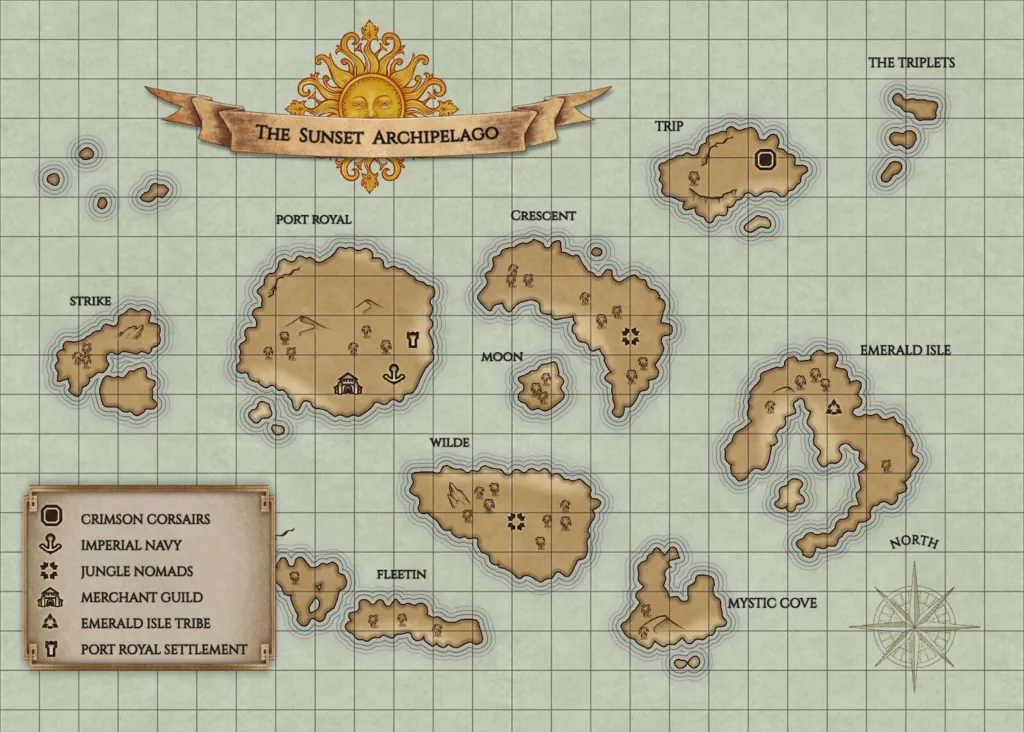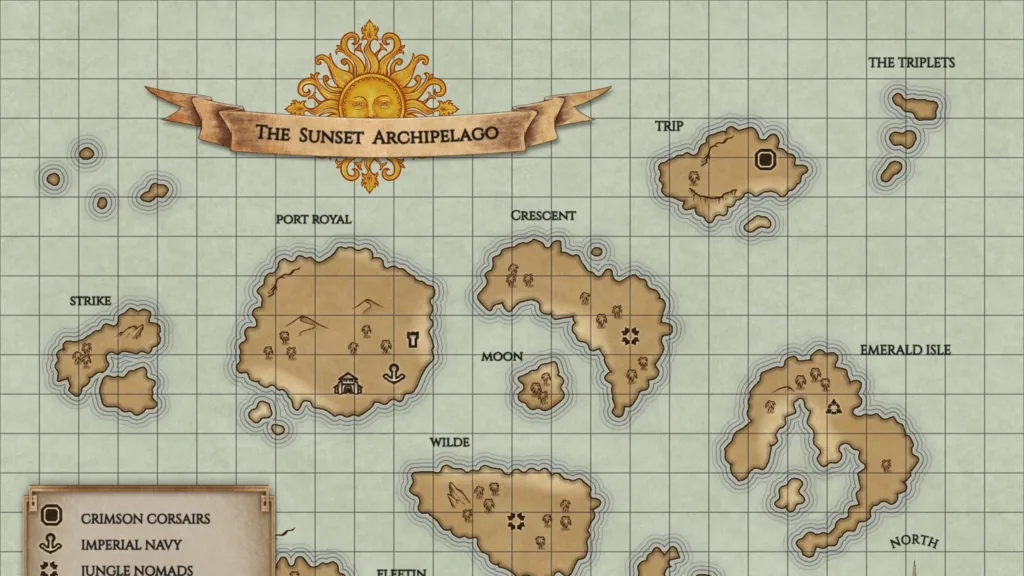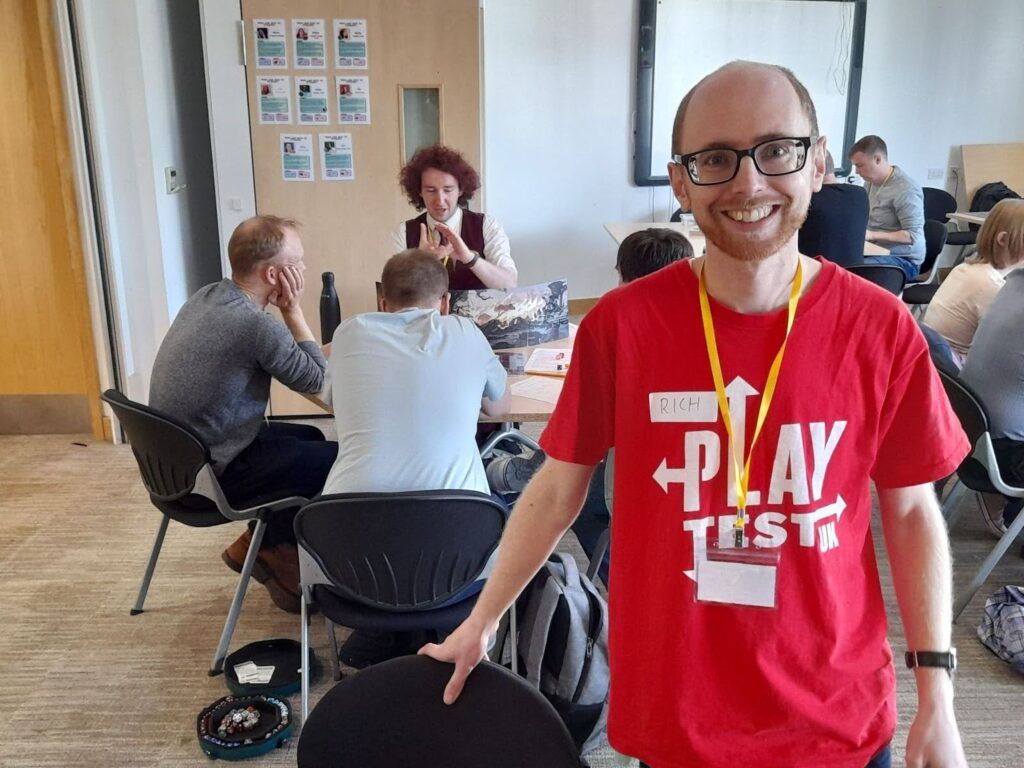In today’s fast-paced world where instant gratification seems to rule, I recently stumbled upon something different: matrix games. This discovery came through a chance meeting at my local games café, where I met Jake Thornton, a fellow game designer.
Among our conversations about theme and narrative in games, he mentioned playing a “matrix game” some years ago—a concept I’d never heard of before.
What is a Matrix Game?
Matrix style games were originally designed in the late 80s by designer Chris Engle. The format, as I understand it, is elegantly simple:
- A moderator establishes a scenario or context
- Players are assigned specific roles, factions, or characters
- Round by round, each player submits what they believe their character or faction would do next
- Players provide reasoned arguments for why their actions would succeed
- The moderator crafts the ongoing narrative based on these arguments
What particularly intrigued me was the possibility for intentional slowness. In an era where everything happens at lightning speed, the idea of a game where rounds might take a month to conclude, and where the story unfolds gradually, felt almost revolutionary in its deliberate pace. Matrix games can be played in on hour, one day, but I think there’s something special to be explored over a longer timescale.
Down the Rabbit Hole
As I often do (much to the detriment of my existing projects), I dove headfirst into researching matrix style games. It wasn’t the easiest topic to Google—you mostly get results about “The Matrix” films and their related video games—but I discovered some fascinating resources (which I’ve linked at the bottom of this post).
The more I read, the more I appreciated the elegant simplicity of the format. These games are fundamentally about collaborative storytelling, driven by procedural arguments where players pitch solutions and explain why they should work. There are delightful quirks too—factions can communicate directly, forge alliances, or attempt to influence each other’s decisions.
Perhaps most exciting is that these games have no predefined ending. The narrative emerges organically from player choices within the context of the story. The possibilities are virtually limitless.
Creating My Own Matrix Game: The Sunset Archipelago

Inspired by what I’d learned, I decided to create my own matrix game. Thus, “The Sunset Archipelago” was born—a game where six competing factions play out a story over approximately six months of real time.
I established a baseline narrative set in a chain of islands where various groups coexist in relative peace, though not without challenges. I opted for a setting grounded primarily in reality, with just hints of mysticism and magic to allow for diverse faction types:
- Pirates
- Native islanders
- Imperial navy
- Merchants
Each faction has a distinct profile with simple character points and overarching goals. While winning isn’t the objective—the experience and narrative development are what matter—I created a compelling starting event to kick things off: an earthquake has raised a cliff face from the ocean, revealing rare and valuable mineral deposits. This serves as the initial point of interest for the five different player factions.
To help players visualise the setting, I used Inkarnate (a powerful and user-friendly map-making software) to create a map of the archipelago.

Stepping Into Unknown Territory
There’s something uniquely thrilling about venturing beyond familiar creative boundaries. This matrix game adventure represents more than just another project—it’s a deliberate step outside my comfort zone, documenting my journey in greater detail than I typically would.
By sharing this quirky, old-school format, I hope to spark curiosity in fellow designers who might never have encountered matrix games before.
And honestly? I’m excited about the prospect of gathering a community of players willing to embark on this narrative experiment alongside me. The possibility of connecting with new minds over a shared creative experience has me genuinely enthusiastic about what unexpected stories might unfold.
After all, isn’t that sense of discovery why we create games in the first place?
Join the Adventure!
If you’re interested in playing “The Sunset Archipelago,” I’d be happy to organise a game. I’m planning to run it as a postal game for UK-based players, and as an email version at the same time (even if I do love the charm of physical mail for this kind of slow, deliberate gameplay).
I’ll be starting my first game soon, but I’m going to running a second group simultaneously. Whether it turns out to be brilliant or terrible, that’s the exciting part—we won’t know until we try! Drop me a message on Instagram if you want to be involved.
It’ll be nice and relaxed, something you can explore each fortnight or so as a new portion of the narrative drops into your inbox. I think it’ll be fun. Another quirk, it’ll be anonymous – you’ll be playing with (and against, or maybe together) 5 other people, but you’ll never meet or find out who they are, you’ll just be involved in their stories.
I hope to see you there.
Oh, here’s the important resources bit, written but the people who know what they’re talking about rather than the guy who’s just guessing.
Resources
Role Playing and Matrix Games by Chris Engle from here.
The Basic Matrix Game by Chris Engle from here.
Practical Advice on Matrix Games byTom Mouat from here.
Here’s to following your curiosity down the rabbit hole and spending time with fellow designers who inspire new creative directions!



